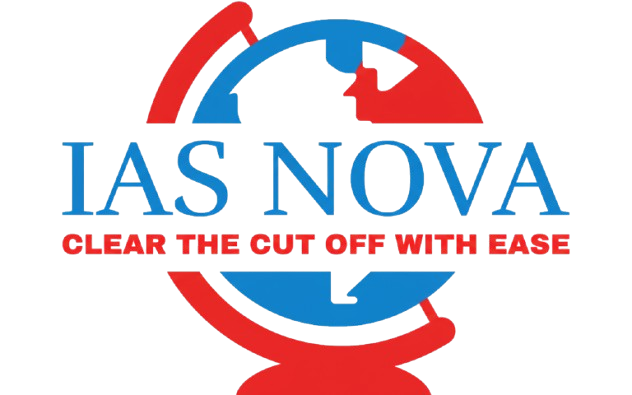Talcott Parsons’ Theory of Social Systems
A concise, exam-focused breakdown of Parsons’ structural functionalism—highlighting his AGIL model, pattern variables, systemic equilibrium, and criticisms. Perfect for last-minute UPSC Sociology revision.
1️⃣ Background
Talcott Parsons (1902–1979) was the chief architect of structural functionalism. He viewed society as a self-regulating system in which individuals perform roles based on shared norms and values. His classic work The Social System (1951) sought to explain how order and stability persist despite change.
2️⃣ Concept of the Social System
A social system is a network of actors bound by common norms, expectations, and patterned relationships. It explains how predictable behavior emerges through role performance and value consensus.
| Component | Explanation |
|---|---|
| Actors | Individuals guided by goal-oriented norms. |
| Orientation | How actors perceive situations and others. |
| Norms & Values | Define legitimate actions and moral limits. |
| Interaction | Role-based exchanges producing stability. |
3️⃣ Structure of the Action System
Parsons identified four interdependent subsystems—each providing a necessary dimension of human action: biological energy, personal motivation, social order, and cultural meaning.
| System | Function | Example |
|---|---|---|
| Cultural System | Gives meaning and value to actions. | Religion, science |
| Social System | Organizes relationships via roles. | Family, politics |
| Personality System | Shapes motives and desires. | Ambition, loyalty |
| Behavioral Organism | Provides physical energy and response. | Instincts |
graph LR
C[Culture ▸ Values] --> S[Social ▸ Norms]
S --> P[Personality ▸ Motivation]
P --> B[Behavior ▸ Energy]
S --> E[Equilibrium]
Integration among four subsystems sustains equilibrium.
4️⃣ AGIL Model – Functional Imperatives
The AGIL framework identifies four functions that every system must perform to survive. Each corresponds to a specific societal institution.
| Function | Meaning | Subsystem | Example |
|---|---|---|---|
| A – Adaptation | Adjusting to the environment, producing resources. | Economy | Markets, industries |
| G – Goal Attainment | Setting and pursuing collective goals. | Polity | Government |
| I – Integration | Coordinating units, resolving conflict. | Law, Religion | Courts, belief systems |
| L – Latency | Maintaining cultural patterns and motivation. | Family, Education | Socialization |
graph TD
A[Adaptation ▸ Economy] --> G[Goal Attainment ▸ Polity]
G --> I[Integration ▸ Law]
I --> L[Latency ▸ Family]
L --> A
5️⃣ Pattern Variables – Choices of Action
Pattern Variables are moral choices shaping behavior, distinguishing traditional from modern societies. They show transition from emotional, kin-based ties to rational, rule-based conduct.
| Variable | Traditional | Modern |
|---|---|---|
| Affectivity ↔ Affective Neutrality | Emotional involvement | Impersonal restraint |
| Particularism ↔ Universalism | Personal judgments | Rule-based judgments |
| Ascription ↔ Achievement | Status by birth | Status by merit |
| Diffuseness ↔ Specificity | Broad roles | Task-specific roles |
| Collectivity ↔ Self-Orientation | Group priority | Individual priority |
6️⃣ Societal Subsystems and AGIL Mapping
Each major institution corresponds to one AGIL function, ensuring that society meets its basic survival needs collectively.
| Subsystem | AGIL Role | Institution | Purpose |
|---|---|---|---|
| Economy | A | Markets | Resource management |
| Polity | G | Government | Goal attainment |
| Societal Community | I | Law, Religion | Integration |
| Fiduciary System | L | Family, Schools | Value maintenance |
7️⃣ Equilibrium and Change
Parsons viewed change as evolutionary differentiation. As societies evolve, institutions specialize without disrupting the value system. Equilibrium is maintained through gradual adaptation.
8️⃣ Criticisms
Critics argue that Parsons’ model idealizes stability and ignores power, conflict, and inequality. Yet, it remains foundational for systems theory and neo-functionalism.
| Critique | Explanation |
|---|---|
| Overemphasis on Stability | Neglects conflict and inequality. |
| Conservatism | Justifies existing order as functional. |
| Teleology | Explains institutions by purpose, not cause. |
| Static Outlook | Fails to explain revolutions or abrupt change. |
9️⃣ Quick Summary Table
| Concept | Essence | Example |
|---|---|---|
| Social System | Norm-guided interaction | Family, profession |
| AGIL Model | Functional prerequisites | Economy, polity, law |
| Pattern Variables | Traditional vs modern values | Ascription → Achievement |
| Equilibrium | Value consensus ensures order | Religion, law |
| Differentiation | Functional specialization | Schools, bureaucracy |
🔶 Conceptual Flowchart
graph LR
C[Culture ▸ Values] --> S[Social ▸ Norms]
S --> A1[AGIL ▸ Functions]
A1 --> A[Adaptation ▸ Economy]
A1 --> G[Goal ▸ Polity]
A1 --> I[Integration ▸ Law]
A1 --> L[Latency ▸ Family]
S --> O[Order ▸ Equilibrium]
Conclusion
Parsons offered a systemic lens to see society as an interlinked whole—maintaining balance through shared norms. Despite criticisms, his framework remains vital for understanding stability, order, and value consensus in modern sociology.
